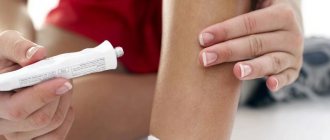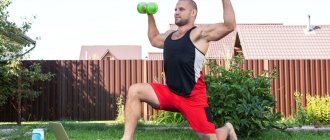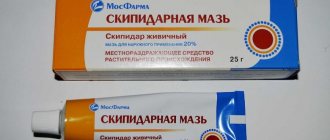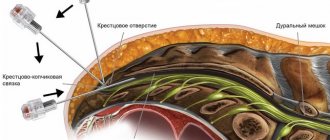"Levomekol" is an antibacterial combination drug for external use with a wide spectrum of action. Levomekol ointment prevents the spread of pathogenic microbes, eliminates swelling, accelerates wound healing, and also increases local skin immunity.
Levomekol for burns
This combination is provided by two active components in the ointment - Chloramphenicol (aka Levomycetin) and Methyluracil. Chloramphenicol is a natural antibiotic that actively blocks intestinal, pseudomonas and staphylococcal bacilli. And methyluracil accelerates the regeneration of the epidermis. The peculiarity of methyluracil is its ability to easily and quickly penetrate into the dermis, without affecting the membrane cell membrane. This process is associated with the removal of excess fluid from the intercellular space, which usually causes swelling and bruising.
What is Levomekol used for?
Levomekol has a multifaceted therapeutic effect:
- quickly reduces the inflammatory process, prevents its spread to healthy tissues;
- prevents the growth and reproduction of bacterial infectious agents;
- quickly eliminates swelling by normalizing microcirculation;
- ensures delivery of nutrients and biologically active substances, as well as molecular oxygen, to the affected tissues;
- stimulates the regeneration of inflammatory cells of all layers of the epidermis;
- increases immunity at the local level.
The ointment quickly removes all inflammatory processes on the skin
It is worth noting that the presence of purulent discharge and necrotic tissue does not prevent Levomekol ointment from performing its function. The drug can be used to disinfect and accelerate tissue regeneration.
Indications for use of Levomekol ointment
Since Levomekol ointment has an antibacterial effect, and at the same time stimulates the restoration of tissue structure, the drug is indicated for the following diseases:
- infection of wounds with pathogenic microflora, ulcers and purulent abscesses on the epidermis;
- burns (mostly 2nd and 3rd degree);
- violation of tissue integrity due to injuries;
- necrotic processes;
- weeping and dry eczema;
- calluses;
- trophic ulcers;
- frostbite of the extremities (superficial layers of the skin);
- pimples, acne, carbuncles, boils;
- otitis and sinusitis (including with purulent discharge);
- treatment of sutures after surgery
- bedsores;
- haemorrhoids.
Levomekol ointment can be used for children
"Levomekol" can be used for children from 1 year. But before this, it is imperative to consult a pediatrician.
Contraindications
Like many drugs, Levomekol has contraindications:
- individual intolerance to the components of the medication;
- hypersensitivity of the body;
- fungal infections of the epidermis;
- tendency to allergic reactions;
- psoriasis.
The official instructions for use indicate that in pediatrics the ointment is prescribed starting from 3 years of age. However, many pediatricians, based on the harmlessness of Levomekol, allow its use from infancy.
The impact of infiltration on health and well-being
Some people tolerate them without any complications or discomfort, waiting until the lumps begin to resolve naturally, but in most patients the appearance of lumps is accompanied by the following symptoms:
- Pain syndrome that has a pressing, pulling or cutting nature. The pain can be quite severe
- Bruising, hematomas. Occurs if blood vessels are injured during the injection process
- Suppuration. May develop if an infection gets into the blood or tissue after the injection
- A noticeable increase in body temperature, chills, fever. May indicate inflammatory processes in the body
- Itching, burning, redness at the injection site. Such manifestations often occur due to the appearance of allergic reactions to the drug administered during the injection.
If you notice such symptoms, you should seek qualified help from specialists; they will prescribe adequate treatment and help you quickly get rid of negative side effects in the form of painful growths and bruises.
Side effects
Levomekol is considered a universal drug and is usually well tolerated by patients. But in case of overdose (if the drug is used for more than a week), allergic skin reactions may occur.
- hyperemia;
- burning;
- itching;
- urticaria;
- dermatitis at the site of application;
- local swelling;
- When using vaginal tampons, candidiasis may occur.
No incompatibility with other medicinal products has been reported. Make sure that the ointment does not get into your eyes, mucous membranes or inside. In case of contact with eyes and mucous membranes, rinse them immediately with running water. If swallowed, the stomach must be rinsed.
Distinctive features of injections
Standard medical protocols involve the use of intramuscular injections. Today, with their help, doctors can treat most various types of ailments without resorting to prescribing oral medications. Doctors prefer this method of therapy for several reasons:
- Possibility of targeted delivery of drugs. This is important in neurology, surgery, dentistry, anesthesiology and other areas of medicine that require local exposure to medications during treatment.
- No irritation of mucous membranes. Some tablet antibiotics, muscle relaxants and a number of other groups of drugs irritate the mucous membranes of the gastrointestinal tract
- Speed of action of the drug. The same drug, administered as an injection and orally, begins to act at different intervals. Injections go directly into the blood, so they work much faster, this is especially important in the context of painkillers and antipyretics, antispasmodics
The relative disadvantages of using injections are much smaller. The main thing is the need for special knowledge and skills in the person doing the injection. Anyone can take the pill after a doctor’s prescription.
Levomekol in the treatment of burns
For burns, Levomekol is needed to prevent infection of the wound surface with pathogenic infections, as well as to accelerate tissue healing. Levomekol also copes with inflammation, which can lead to suppuration of the wound. The ointment cleanses the affected area well from both purulent discharge and necrotic cells.
The treatment system for a small area burn of 1-2 degrees is as follows:
- before applying the ointment, the wound is washed under running water;
- the ointment is applied to a sterile gauze pad, which is applied to the wound surface;
- the bandage is applied for a day;
- dressings are done every day - up to 5 times a day.
The burn is treated until the tissue is completely healed. The total duration of the course for minor household burns is 5 – 14 days.
Why are bumps after injections dangerous?
Doctors identify a number of complications, the timely and adequate treatment of which was not carried out. Here are the most dangerous:
- The appearance of abscesses. Such phenomena occur on the butt or in other areas in which bumps from injections were caused by infection
- Blood poisoning. If the injection was performed without disinfection, harmful agents could enter the bloodstream
- Allergic reactions. The appearance of bright red bumps after injections along with difficulty breathing, increased sweating and lacrimation indicates the presence of an allergy caused by the injection. In this case, compaction on the buttocks or in another area is a consequence of it
- Tissue death. Such cases are quite rare. They are the result of abscesses and suppurating seals in the buttocks, which the patient did not want to treat in time.
Levomekol in the treatment of acne
"Levomekol" has an antibacterial and wound-healing effect, therefore it is widely used in dermatology, in particular, in the treatment of acne. The course of treatment depends on the severity of the disease and the number of skin rashes.
Small pimples are treated by applying a thin layer of ointment to the affected area. This is done in the evening for several hours, and before bedtime Levomekol is washed off. Within two weeks, pimples disappear, facial skin becomes even, and small scars heal.
Treating acne with ointment
Levomekol is applied to isolated inflamed pimples in a thin layer, covered with a small piece of cotton wool and left for 2-3 hours. Therapy lasts 2-3 days.
As for opened pimples, the medicine is placed directly into the resulting holes.
To treat acne, Levomekol is applied to the affected area overnight. In the morning, the ointment must be washed off. Typically, the course of treatment takes 2 weeks, during which the inflammation subsides and the acne breaks out or resolves.
To eliminate subcutaneous acne, you need to do the following:
- after washing with soap, the skin is cleansed with any tonic or lotion;
- Apply the ointment in a thin layer on a sterile napkin and apply it to the area of skin with acne;
- the bandage is fixed with adhesive tape.
The duration of the treatment procedure is 3-5 hours. If deep, painful ulcers appear on the skin, keep the bandage on the body all night.
The duration of therapy is about 7-10 days, depending on the degree of damage to the dermis.
Levomekol in the treatment of hemorrhoids
Levomekol ointment can be used as an addition to complex therapy for hemorrhoids during periods of exacerbation. It is recommended to use the ointment in cases where blood is released from the hemorrhoids. Since the drug has an antibacterial effect (wounds can be infected with feces), helps relieve inflammation and neutralize pathogenic bacteria, Levomekol is prescribed for the regeneration of anal tissue.
- it is necessary to wash the perineum and anus with soap and water and dry with a soft towel;
- apply a thin layer of ointment to the anus before going to bed;
- the area of influence from above is covered with a bandage and fixed with an adhesive plaster;
- When treating internal nodes, a tampon is soaked in ointment, which is then inserted into the anus.
Levomekol for hemorrhoids
The duration of therapy is 10 days. Since Levomekol is not a specialized antihemorrhoidal drug, after the inflammation has resolved, the decision to continue therapy and prescribe medications is made only by the attending physician.
Diagnosis of the causes of pain in the buttocks and their treatment
Most often, diseases in this area are dealt with by surgeons, orthopedists, neurologists, traumatologists, and dermatologists. Initially, you can contact a general practitioner - a therapist, who will refer you to the appropriate specialist.
To diagnose the cause of pain in the buttock, use:
- general analysis, biochemical blood test;
- tissue biopsy;
- examination of synovial fluid;
- physical examination;
- radiography;
- magnetic resonance imaging;
- computed tomography;
- ultrasonography;
- electromyography;
- testing reflexes and strength in the lower extremities;
- tuberculin test.
Based on the results of the selected diagnostic complex, the patient may be prescribed:
Levomekol in the treatment of wounds
Levomekol helps heal damaged tissue and prevents infection of the wound surface. Moreover, it is not so important whether the wound has festered or not. If the wound is not purulent, then first the affected area is treated with an antiseptic. The ointment is applied in a thin layer overnight, then it must be covered with a sterile gauze cloth and secured with a bandage. Most often, wound treatment is required once a day.
If the wound festers, then using cotton-gauze swabs moistened with an antiseptic, the pus and secreted secretions are removed. Then Levomekol ointment is applied to the wound - it should be completely filled, but not too tightly. The affected area is covered with a gauze cloth, also soaked in ointment. As for the frequency of changing the bandage, it all depends on the amount of pus released. Usually a double dressing is sufficient.
And if the wound is deep and accompanied by an infectious lesion, then Levomekol is preheated to 35 degrees Celsius, then a sterile napkin is soaked in ointment (several can be used if the affected area is large) and injected into the lesion. If the affected area is large, use several napkins with Levomekol. It is important that the wound is filled completely, but not too tightly.
Note that to administer the medication into puncture and deep wounds, it is better to use a rubber drainage tube, and inject the heated ointment itself using a syringe.
The duration of therapy usually lasts from 5 to 10 days.
Use of Levomekol ointment in gynecology
Levomekol is successfully used in gynecology and urology.
In gynecology, therapy is carried out using tampons with ointment applied to them. A similar method is indicated for the treatment of the following conditions:
- inflammatory erosion of the cervix;
- inflammation of the uterine appendages (ovaries, fallopian tubes);
- divergence of vaginal sutures after ruptures during childbirth or operations.
The treatment system consists of the following sequence of actions:
- before use, a woman must thoroughly wash and dry the skin of the treatment area and perineum;
- if therapy is used after the divergence of vaginal sutures or after operations, then the sutures must be treated with a weak solution of potassium permanganate or furatsilin;
- you need to make a small cotton swab, put an ointment on top of it measuring 15 mm x 15 mm, and 5 mm high;
- insert into the vagina at night and remove in the morning;
- if therapy is used after the divergence of vaginal sutures or after operations, then the ointment is applied to a gauze bandage and applied to the sutures. Then put on clean underwear (if necessary, you can additionally use a pad). The dressing remains on for 2 to 6 hours.
Using the method described above, the active substance of the ointment is delivered to the affected area and absorbed into the surrounding vaginal tissue.
In urology, Levomekol is used in the treatment of balanitis and balanoposthitis in men, as it has anti-inflammatory and antimicrobial effects. The treatment system consists of the following sequence of actions:
- before applying the ointment, the head of the penis is washed with a weak solution of potassium permanganate or furatsilin, removing pus and dead tissue;
- Levomekol is applied to the affected area in a dense layer.
The remedy is applied 1-2 times a day until complete recovery. After the inflammation is relieved, Levomekol is applied for another week, 1 time per day - in the evening, before bedtime.
Levomekol or Vishnevsky ointment. What's better?
Let's start with the fact that Vishnevsky ointment and Levomekol, although they are used in similar cases, still have a multidirectional spectrum of action. Thus, Vishnevsky ointment is effective when the wound is in the process of regeneration. Therefore, it cannot be used when the wound is suppurated or severely inflamed. Yes, the drug contains an antiseptic, but its concentration is not enough to provide a bactericidal effect. Moreover, tar and castor oil stimulate blood circulation in the affected area, which worsens the situation.
This is why Vishnevsky’s ointment is not as effective, since Levomekol has higher antibacterial activity due to the presence of an antibiotic in it and accelerates the process of outflow of pus from the wound. Also important are the following distinctive features that determine the superiority of Levomekol ointment:
- no unpleasant odor;
- higher repair characteristics;
- does not provoke irritation in the treatment area;
- when treating boils, Levomekol quickly initiates an abscess and opening of the abscess, followed by wound healing.
But if Vishnevsky ointment helps the patient, then there is little point in changing it.
Causes of bumps
In the medical literature, such phenomena are called infiltrates. They are a collection of blood and lymph cells under the skin. Such seals cause their owner a lot of trouble, causing pain and acting as a catalyst for destructive processes. Lumps can appear for several reasons:
- There was trauma to the vessel. In this case, the compaction is usually accompanied by bruising
- The injection was given in the wrong place. Not every place is suitable for injection. The optimal areas are the buttocks, located in the extreme upper quarters, deltoids and quadriceps.
- Failure to comply with technology. The administration of injections should be carried out in accordance with the recommendations of the Ministry of Health and SanPin. They prescribe the puncture at a right angle
- The rate of drug administration or the force of pressure on the piston was exceeded. The medicine should be administered gradually
- During the injection, a nerve ending was damaged. Experienced specialists know the locations of large nerve nodes and try to avoid them
- The length and diameter of the needle were chosen incorrectly. The larger the syringe, the more it injures the tissue during the injection.
- Insufficient disinfection of tissues or its complete absence. In this case, the bumps appear due to infection, which may be more difficult to cure than the original disease.
- Specificity of the administered drug. Some medications can cause bumps due to the fact that they constrict blood vessels and muscle fibers
Analogs
Analogs of Levomekol ointment have a bactericidal and healing effect. But the difference lies in the active ingredient of the drug. So, among the analogues one can name Fugentin, Levosin (additionally has an analgesic effect), Protegentin, Fastin-1, Salicylic-zinc paste.
Synonyms, that is, drugs with the same substance (but in higher concentration) as Levomekol ointment, can be considered Netran and Levomethyl. Substitute medications can only be prescribed by the attending physician.
Preventive measures
Putting the following recommendations into practice will help minimize the possibility of lumps appearing after intramuscular administration of the drug:
- Use of sterile syringes whose expiration dates are within acceptable limits
- Removing the needle after administering the drug should follow the same trajectory as the puncture
- Compliance with the rules of disinfection and asepsis
- Oil-based preparations should be heated to the required temperature
To avoid the risk of complications after injections, you should trust their implementation to qualified specialists who fully possess the relevant knowledge, practical skills and sufficient experience. In this case, the possibility of the appearance of neoplasms will be minimized.










